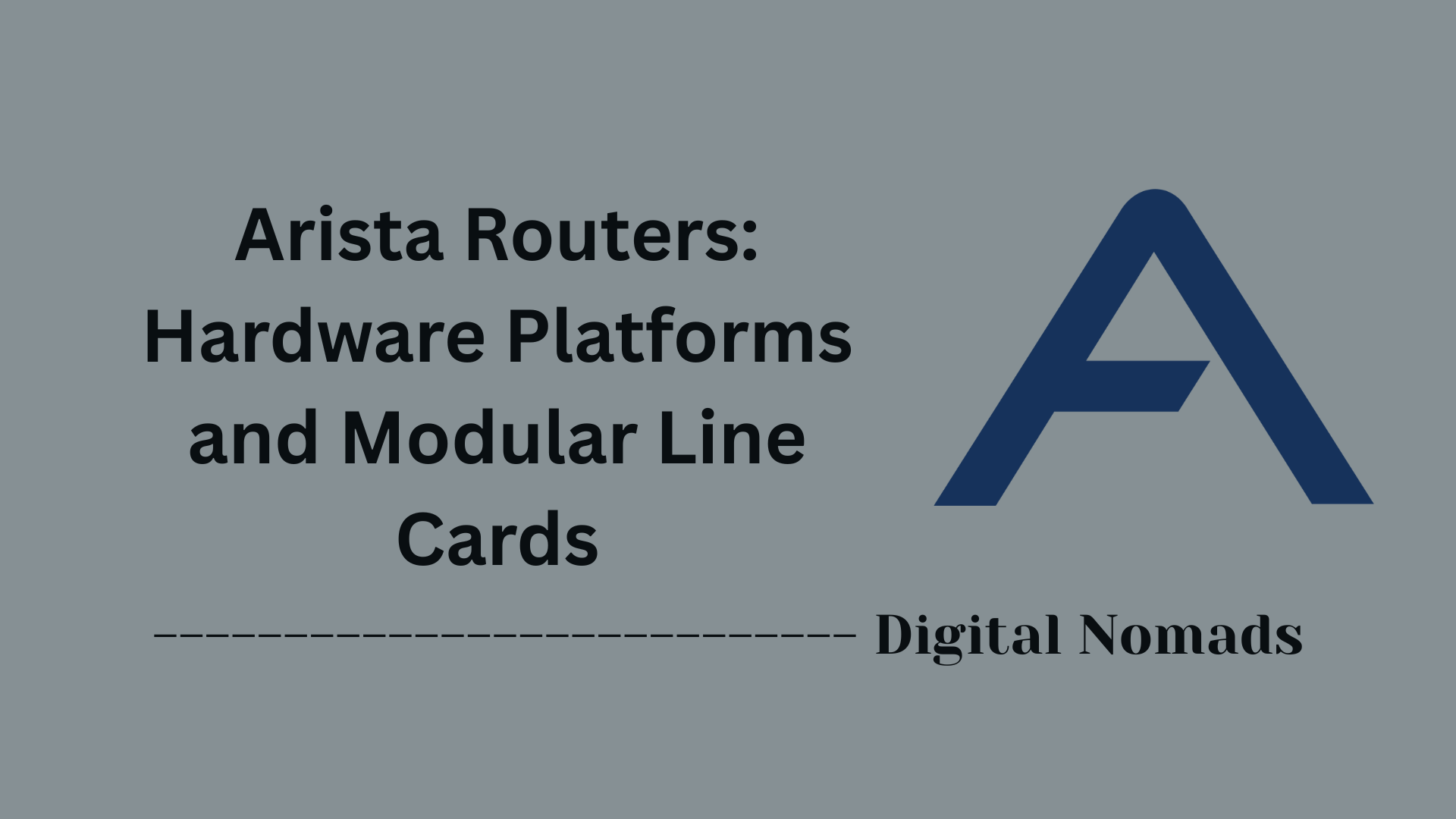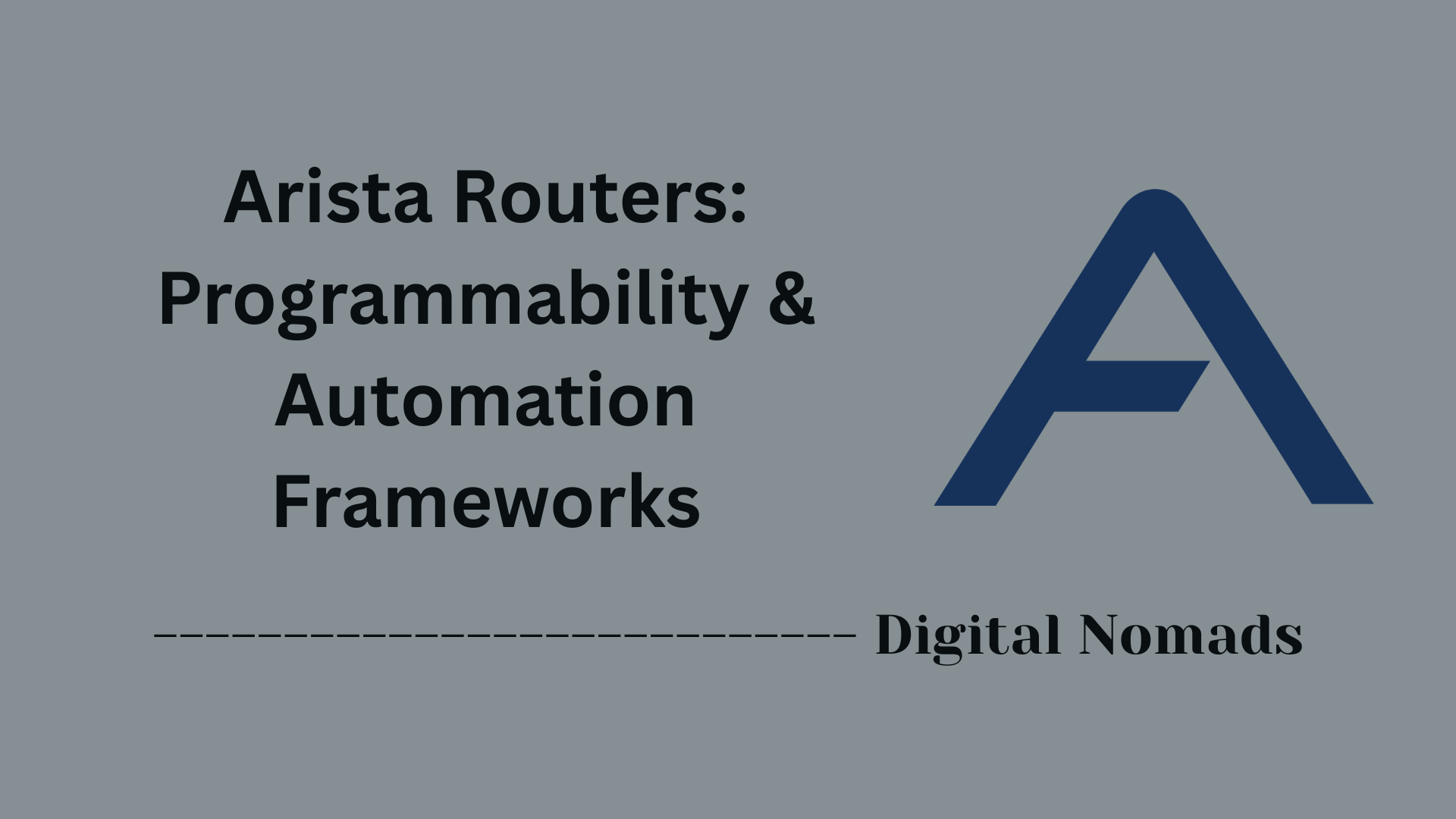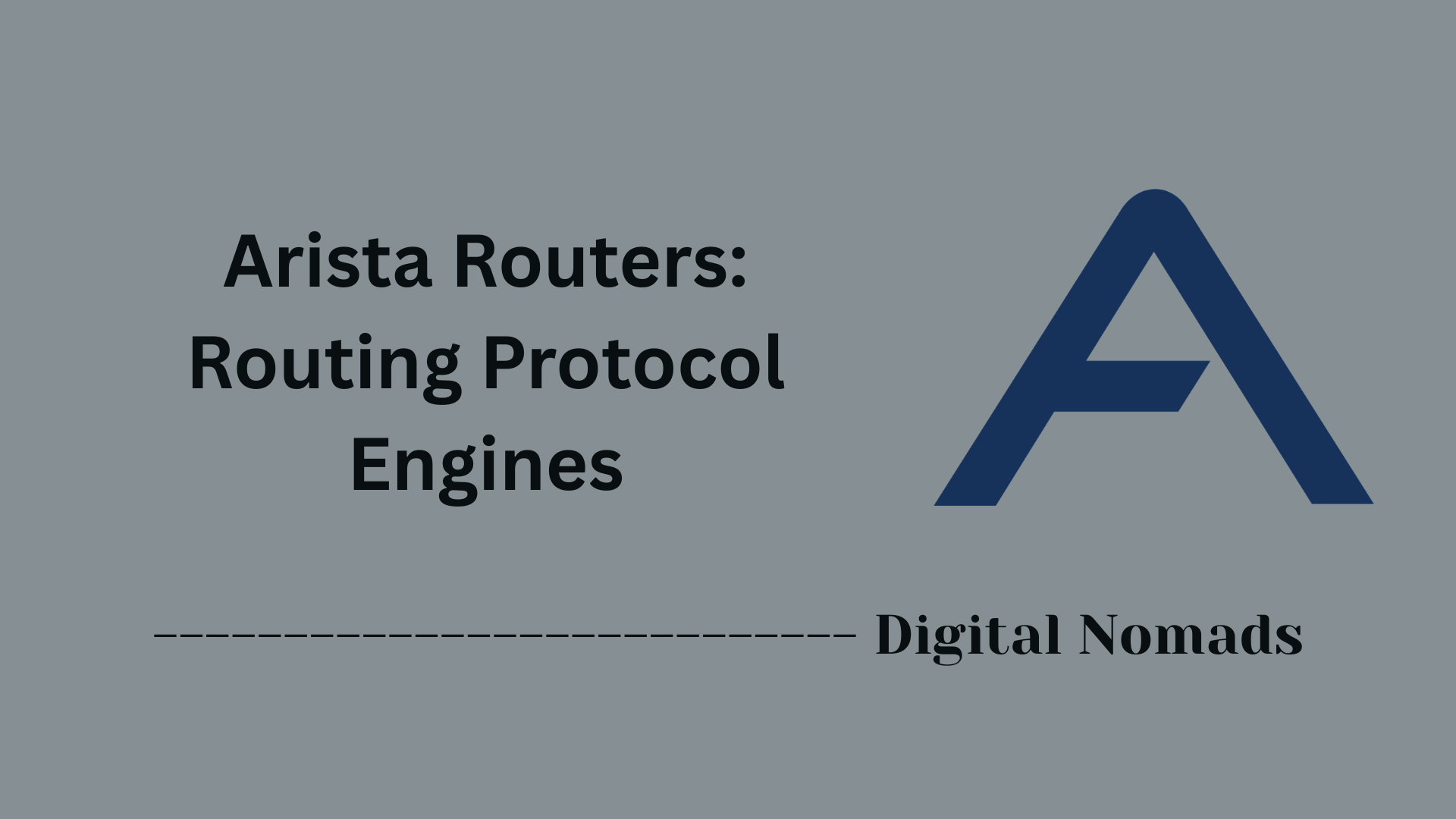Table of Contents
- Overview
- Key Terminology
- Major Telemetry Modules & Technologies
- Supported Platforms and Integrations
- Example Telemetry Data Types
- Typical Use Cases and Benefits
- Conclusion
Arista Routers: Telemetry and Analytics – Overview
What Is It?
Arista Routers: Telemetry and Analytics refers to a suite of advanced technologies embedded in Arista routers that continuously collect, stream, and analyze real-time network data. Telemetry involves automated, granular data collection from hardware and software components, while analytics processes this information to reveal actionable insights about network health, performance, and security.
Arista’s approach integrates multiple telemetry modules (like NetDB, DANZ, and LANZ) and analytics engines, centralizing data and enabling deep visibility into every corner of the network. This information is often aggregated and visualized through platforms such as Arista’s CloudVision for end-to-end operational awareness.
Why You Need to Know About It
- Proactive Network Management: Real-time telemetry data allows network teams to spot issues—like congestion, packet drops, or hardware faults—before they impact users or critical applications.
- Accelerated Troubleshooting: Analytics engines automatically correlate data and events, reducing mean time to repair (MTTR) by quickly pinpointing root causes of network problems.
- Enhanced Security and Compliance: Continuous monitoring allows for swift detection of abnormal behaviors, security breaches, or compliance issues, aiding forensics and regulatory reporting.
- Operational Efficiency: Automation and data-driven insights streamline routine tasks, reduce manual troubleshooting, and support smarter capacity planning.
- Hybrid and Scalable Deployments: Arista’s solutions are designed for diverse environments, from cloud data centers to campus networks, enabling consistent visibility across the entire network estate.
How It Works
- Data Collection via Telemetry:
Arista routers leverage built-in agents and modules to continuously monitor system state, traffic flows, device health, and configuration changes. Unlike traditional polling, telemetry provides near-instantaneous, event-driven updates. - Data Streaming to Analytics Engines:
This granular network data is streamed in real time using open standards (like OpenConfig) to analytics platforms—either Arista’s CloudVision or third-party tools—where it is stored and organized. - Analytics Processing:
Advanced analytics engines process, correlate, and contextualize the telemetry data. Dashboards, alerts, and historical views present trends, identify anomalies, and offer actionable recommendations. - Automation and Integration:
APIs and integrations enable programmatic access, allowing network operations teams to automate monitoring, remediation, and reporting within larger IT workflows or DevOps pipelines.
In summary, Arista Routers’ telemetry and analytics capabilities empower organizations to build smarter, more resilient networks—delivering unprecedented visibility, faster remediation, and robust operational assurance in complex environments.
Key Terminology
Understanding the following terms is essential to grasp the concepts related to Arista Routers’ telemetry and analytics capabilities:
- Telemetry: An automated process of collecting detailed network data such as state changes, metrics, events, and traffic flows in real time to provide deep visibility into network performance and health.
- Analytics: The processing and interpretation of telemetry data to deliver actionable insights, identify network anomalies, and support troubleshooting, capacity planning, and optimization of network policies.
- CloudVision: Arista’s network-wide automation and telemetry platform that aggregates real-time state information and analytics across multiple devices, providing a centralized operational view.
- EOS (Extensible Operating System): Arista’s network operating system that supports state-based telemetry, APIs, and direct data streaming from hardware components for detailed network visibility.
Major Telemetry Modules & Technologies
This section introduces the main telemetry and analytics modules built into Arista Routers. Each module is designed to provide deep insight and real-time visibility into the network for easier monitoring, troubleshooting, and optimization:
-
NetDB:
Streams real-time state changes from network devices directly to analytics platforms, eliminating the delays and limitations of traditional polling. This enables continuous, granular, network-wide visibility for faster troubleshooting and in-depth auditing. -
DANZ (Data ANalyZer):
A powerful wire-speed traffic capture module that supports packet aggregation, advanced filtering, and timestamping for lossless, high-precision monitoring essential in data center environments. -
LANZ (Latency Analyzer):
Offers microsecond-level congestion and latency analysis, allowing the detection of network hotspots and microbursts in real time. Provides rapid alerts and can export critical data for advanced analytics. -
Telemetry Tracers (VMtracer, MapReduce Tracer, Container Tracer):
Integrated modules for monitoring virtual machines, distributed applications, and containers. These tracers deliver workload-centric visibility for both cloud and on-premises deployments. -
CloudVision Telemetry Apps & Analytics Engines:
A suite of tools for real-time and historical analysis, supporting custom dashboards, event correlation, automated alerts, and integration with third-party analytics tools through open APIs. -
Streaming Telemetry Agent:
Facilitates seamless, automated streaming of telemetry data to external platforms (such as Splunk or custom analytics systems) using standard data models like OpenConfig, with extensive output and integration options.
Together, these modules empower organizations with the operational insight needed for proactive network management, rapid diagnostics, forensics, and seamless integration with cloud-scale tools and DevOps workflows.
Supported Platforms and Integrations
Arista’s telemetry and analytics solutions are designed for broad compatibility and seamless integration across a wide range of network environments. Here’s what you need to know about supported platforms and integration options:
-
Supported Hardware Platforms:
Telemetry features such as NetDB, DANZ, and LANZ are available on both modular and fixed-form factor Arista routers and switches, including 1RU, 2RU, and chassis-based models. Advanced streaming and analytics require EOS version 4.13.3 or later. -
CloudVision Integration:
Arista CloudVision centralizes telemetry and analytics, integrating network-wide state information for visibility across data centers, campus, and hybrid cloud infrastructures. It supports access via JSON and RESTful APIs. -
Third-Party Tools & Ecosystem:
CloudVision and streaming telemetry modules support integration with popular industry tools and platforms, including Splunk, VMware, Docker, SAP, OpenStack, and more. Open and standardized data models like OpenConfig facilitate ease of integration with diverse analytics systems. -
API Access & Automation:
Extensive RESTful APIs enable integration with DevOps pipelines, SIEM and NMS platforms, and cloud-native tools for automated telemetry data collection and analysis. -
Deployment Flexibility:
Telemetry and analytics modules are supported across various deployment types—on-premises, hybrid, or cloud. This helps organizations maintain operational consistency and visibility regardless of environment.
With these supported platforms and integration options, Arista empowers robust, extensible telemetry and analytics for networks of any size or complexity.
Example Telemetry Data Types
Arista Routers provide a broad range of telemetry data that enables deep network visibility and granular monitoring. Key types of telemetry data include:
-
System State Changes:
Includes operational status updates, configuration changes, interface events (up/down), and changes in routing or forwarding tables. These events often trigger immediate notifications for proactive monitoring.
Example: Interface down/up events, new route learned, configuration commit notifications. -
Traffic & Flow Statistics:
Real-time counters and statistics on interface traffic, such as bytes and packets in/out, errors, drops, and rates. Flow-based telemetry provides detailed information on source/destination IPs, ports, protocols, flow start/end times, and packet/byte counts.
Example: Interface counters, flow records (IPFIX, sFlow), queue occupancy, port utilization, hop latency, congestion reports. -
Device Health & Inventory:
Telemetry on hardware status, including power supply, fan, and transceiver health; device inventory such as serial numbers and firmware versions.
Example: Power supply temperature, fan failure, transceiver insertion/removal, device model identification. -
Event Logs and Alerts:
Syslog events, security alerts, error and warning notifications are streamed for correlation and forensic analysis.
Example: Authentication failures, error logs, system warnings, critical health notifications. -
Topology and Network Mapping Data:
Information about network topology, connections (e.g., via LLDP), and ARP/MAC tables, enabling accurate network diagrams and endpoint tracing.
Example: LLDP neighbor info, ARP table updates, MAC address changes.
These telemetry data types power advanced analytics, troubleshooting, capacity planning, and automation, supporting both real-time and historical network visibility.
Typical Use Cases and Benefits
Arista Routers’ telemetry and analytics capabilities provide significant operational advantages across diverse network environments. Below are key use cases and the benefits these solutions offer:
-
Proactive Network Monitoring:
Real-time detection of network congestion, microbursts, and anomalies before they impact users. This enables operators to anticipate issues and take corrective actions promptly. -
Automated Troubleshooting and Diagnostics:
Correlation of telemetry data with historical analytics helps rapidly isolate and resolve faults. This minimizes mean time to repair (MTTR) and reduces manual intervention. -
Compliance, Security, and Forensics:
Continuous traffic capture and event logging support regulatory compliance, security audits, and forensic investigations. Granular visibility allows detection of unauthorized activities. -
Capacity Planning and Network Optimization:
Historical telemetry trend analysis empowers informed decisions on network upgrades, traffic engineering, and resource allocation to optimize performance and cost-efficiency. -
Integration with DevOps and Automation Workflows:
API-driven telemetry streaming enables integration with CI/CD pipelines and cloud-native orchestration platforms. This facilitates automated monitoring and adaptive network management. -
Enhanced Cloud and Virtualized Environment Visibility:
Specialized telemetry tracers for VMs, containers, and distributed applications provide workload-level insights, improving visibility in complex cloud and hybrid deployments. -
Unified Network-Wide Visibility:
Aggregation of state streaming data across all devices offers an unprecedented granular, real-time network-wide view—critical for enterprise, data center, and service provider environments.
Overall, Arista’s telemetry and analytics modules help reduce downtime, improve operational efficiency, enhance security, and future-proof networks in dynamic and demanding infrastructures.
Conclusion
Throughout this blog post, we explored the powerful telemetry and analytics capabilities built into Arista routers. We learned how key technologies like NetDB, DANZ, LANZ, and CloudVision enable real-time streaming, granular visibility, and in-depth analytics to help network operators proactively monitor, troubleshoot, and optimize their infrastructures.
The integration-friendly nature of Arista’s telemetry modules, supporting both on-premises and cloud environments, ensures comprehensive operational insights across diverse deployments. We also covered typical telemetry data types and examined the broad range of use cases — from proactive monitoring and automated troubleshooting to compliance and DevOps integration.
Arista’s approach of combining advanced telemetry with extensible analytics platforms equips enterprises and service providers with the tools they need to maintain resilient, performance-optimized networks in today’s fast-paced, dynamic IT landscape.
Thank you for reading! If you have questions or want to dive deeper into any topic discussed here, feel free to reach out or leave a comment. Happy networking!




